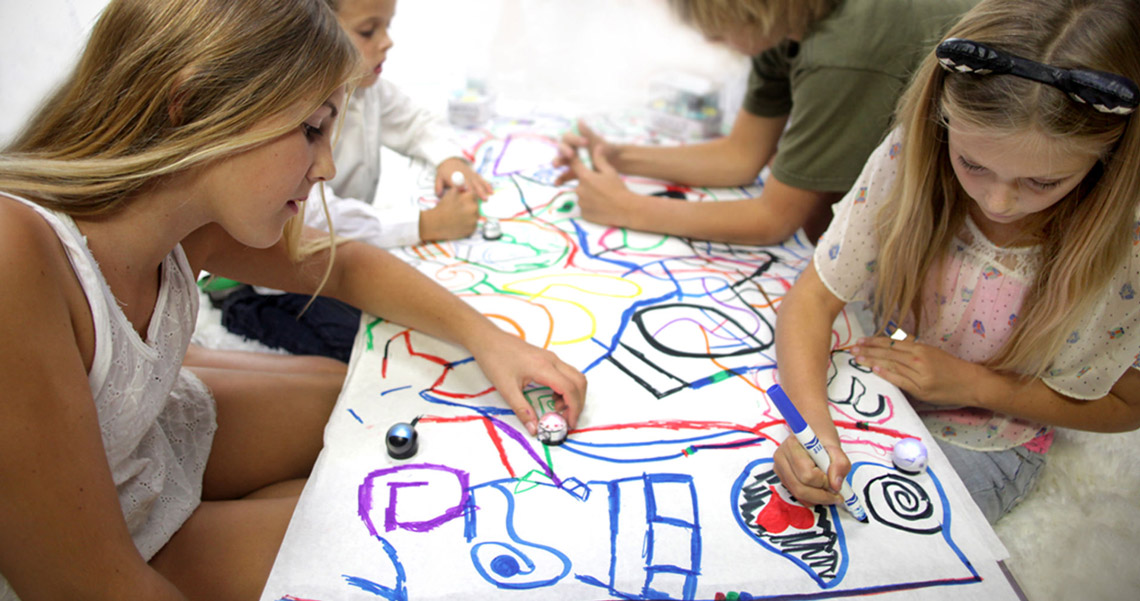Drawing with Ozobot.
A free-form language.

CREATE ADVENTURES AND GAMES FOR OZOBOT TO EXPLORE.
Begin by learning Ozobot’s simple color language as you draw mazes, paths, intersections and create entire worlds to explore puzzling playgrounds, fast tracks and intricate labyrinths.
DRAWING BASICS.
Ozobot won’t move until at least one of the five bottom sensors sees a color. For instance Ozobot will just patiently sit, wait and blink when placed on a white sheet of paper. Place Ozobot on a dark area, like a wood desk or a black kitchen counter and Ozobot will immediately begin exploring and searching for the next adventure.
Tip: Ozobot is Completely obsessed with finding a path and won't hesitate to jump off your dark desk.
Drawing a perfect path.
Ozobot thrives on wide lines (paths) of about a quarter of an inch thick (5mm). You can use small felt tip pens or markers and thicken your paths with multiple strokes, but the fun really starts with wide markers as one fast stroke will create the perfect path.
"Chisel Tip" or wide markers work the best, we suggest you use water based felt pens - inks are non-toxic and more stain resistant.
Drawing intersections.
The most important thing about intersections is that unless told otherwise by a code, Ozobot will randomly decide which path to pick.
Ozobot may have difficulty maneuvering intersections that are less than 90 degree turns.
Drawing color codes.
Color codes are color sequences made of two, three or four color dots in a row located directly on a path. Ozobot’s sensors are designed to read floor signs about 150 times per second to detect red, green, blue, black and white areas and react accordingly.
Draw color codes on straight sections of the line and keep distance from corners and intersections (about 3/4 of inch or 2 cm).
